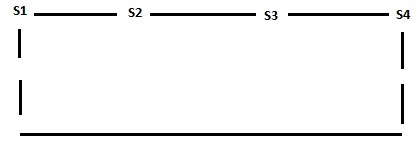Q: Different scenarios of Stack split in case of “Chain” stack topology
A: Below are three scenarios (out of many different permutations & combinations) of decommissioning:

1 Switch Units removed: Two LineCards :
Remaining 2 member stack (Old-Primary & Old-secondary)will remain INTACT and Traffic will flow (from the remaining ACTIVE ports of the stack)
(PROVIDED : At least there is one “STACK link connectivity” between those remaining two switch units)
2 Switch units removed: PRIMARY & SECONDARY :
Remaining two member stack will SPLIT, and the individual units become ‘DORMANT’ – Meaning they will NOT pass traffic.This will happen despite they having stack link connectivity between them.
Reason this happens is that both the remaining units were acting as Linecards at the time of split and they haven’t got the ‘stack database’ synced from Primary.
Only Secondary will periodically get it synced from Primary, so that when primary moves away (goes down), it can assume the role of as New-Primary and run the stack
3 Switch units removed: PRIMARY & LINECARD :
Remaining two member stack (Old Secondary & Old linecard) will remain INTACT and Traffic will flow (from the remaining ACTIVE ports of the stack)
In this case, old-secondary assumes the role of New-primary and old-Linecard assumes the role of new Secondary.